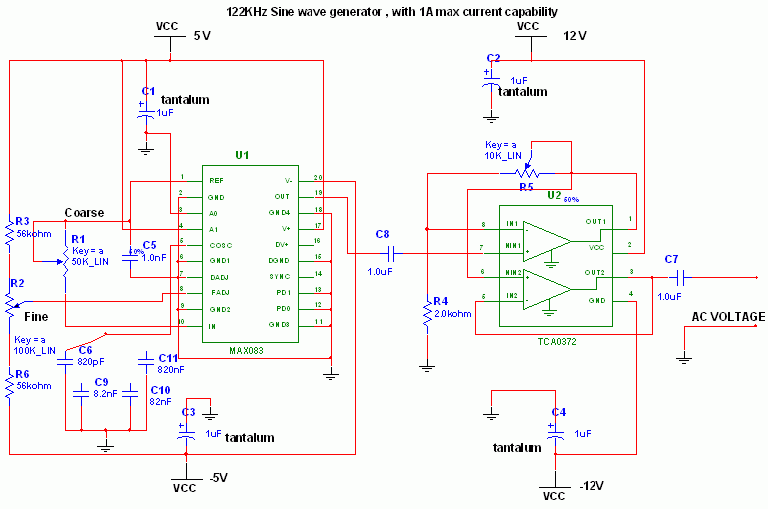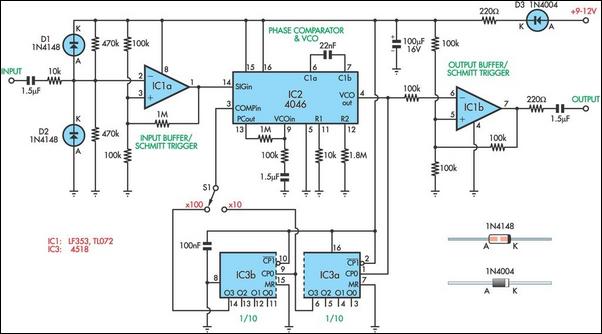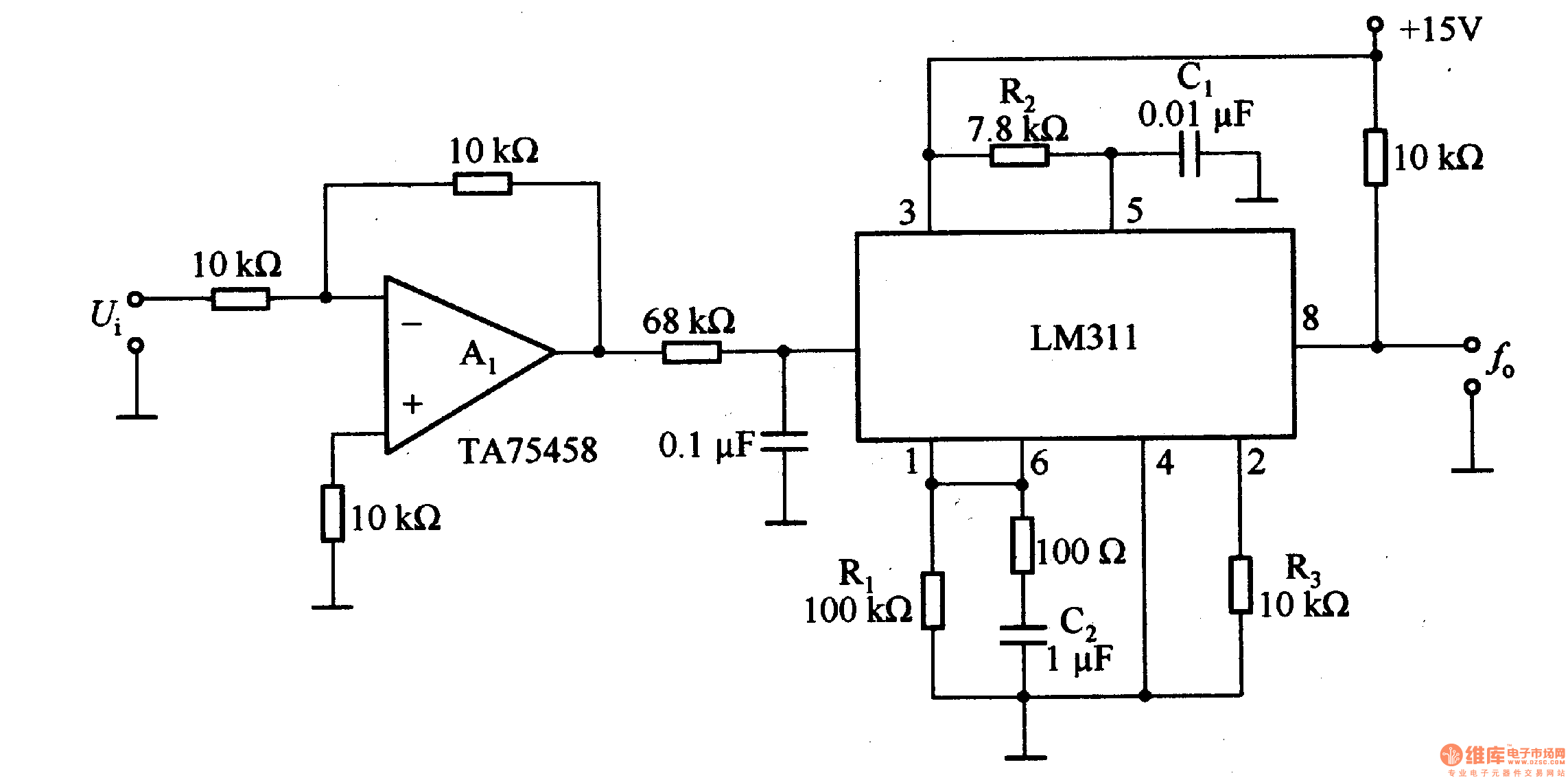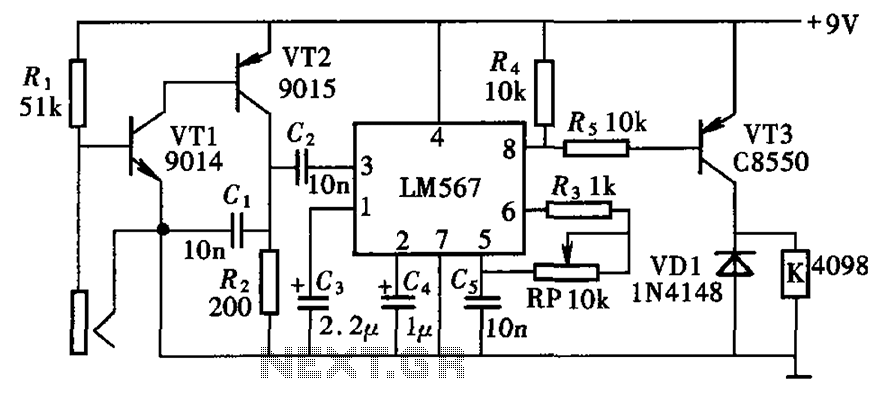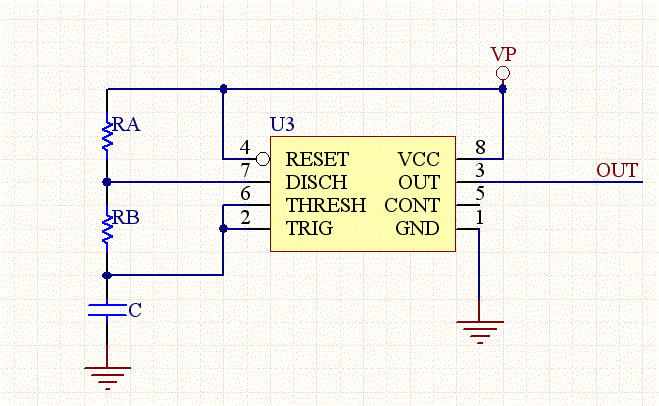
Decade frequency divider
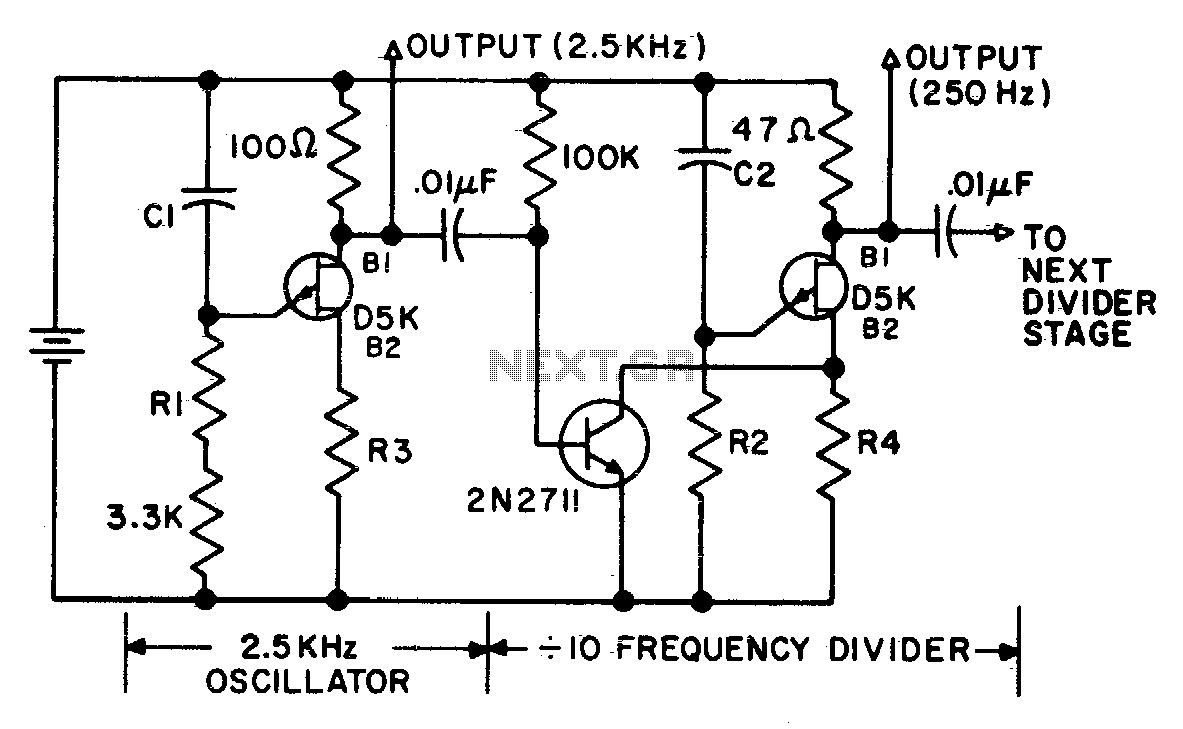
In the next stage, the product of R2 and C2 should be ten times that of the preceding stage (±2%). R2 should be between 27K and 10M. Additional components include C1 and C2 with a capacitance of 0.047 µF (±1%), R1 with a resistance of 100K (±1%), and R2 with a resistance of 1M (±1%). R3 and R4 should be 1K, and may need adjustment based on variations in Rbb of the UJT.
The circuit configuration described involves a timing or filtering application where the values of resistors and capacitors are critical for achieving the desired frequency response or time constant. The relationship between the resistance and capacitance values is crucial, as the product of R2 and C2 is intended to be ten times that of the previous stage. This implies that if the previous stage's product is known, R2 and C2 must be selected accordingly to meet this requirement within the specified tolerance of ±2%.
R2 is specified to have a resistance value ranging from 27K to 10M, providing a flexible range for tuning the circuit's performance. The choice of R2 within this range will directly affect the time constant of the circuit, which is typically calculated as τ = R2 * C2. The capacitance C2, set at 0.047 µF (±1%), must be paired with an appropriate R2 value to ensure the product meets the tenfold increase requirement.
R1, with a resistance of 100K (±1%), serves as a biasing or loading resistor, impacting the overall impedance and stability of the circuit. The additional resistors R3 and R4, both set to 1K, may require adjustments to accommodate variations in the base resistance (Rbb) of the Unijunction Transistor (UJT). This adjustment is essential to maintain the desired operating characteristics of the UJT, which is often used in timing applications or oscillators.
Overall, the careful selection and adjustment of these components are vital for ensuring the circuit operates within the specified parameters, achieving the intended functionality while accommodating component tolerances and variations.In the next stage, the product of R2 and C2 should be 10 x that of the preceding stage (±2%). R2 should be between 27K and 10 M Cl & C2-047 µf (±1 %) R1-100K (±1%) R2-1M (±1%) R3—R4—IK (may need to be adjusted for variation of Rbb of UJT).
The circuit configuration described involves a timing or filtering application where the values of resistors and capacitors are critical for achieving the desired frequency response or time constant. The relationship between the resistance and capacitance values is crucial, as the product of R2 and C2 is intended to be ten times that of the previous stage. This implies that if the previous stage's product is known, R2 and C2 must be selected accordingly to meet this requirement within the specified tolerance of ±2%.
R2 is specified to have a resistance value ranging from 27K to 10M, providing a flexible range for tuning the circuit's performance. The choice of R2 within this range will directly affect the time constant of the circuit, which is typically calculated as τ = R2 * C2. The capacitance C2, set at 0.047 µF (±1%), must be paired with an appropriate R2 value to ensure the product meets the tenfold increase requirement.
R1, with a resistance of 100K (±1%), serves as a biasing or loading resistor, impacting the overall impedance and stability of the circuit. The additional resistors R3 and R4, both set to 1K, may require adjustments to accommodate variations in the base resistance (Rbb) of the Unijunction Transistor (UJT). This adjustment is essential to maintain the desired operating characteristics of the UJT, which is often used in timing applications or oscillators.
Overall, the careful selection and adjustment of these components are vital for ensuring the circuit operates within the specified parameters, achieving the intended functionality while accommodating component tolerances and variations.In the next stage, the product of R2 and C2 should be 10 x that of the preceding stage (±2%). R2 should be between 27K and 10 M Cl & C2-047 µf (±1 %) R1-100K (±1%) R2-1M (±1%) R3—R4—IK (may need to be adjusted for variation of Rbb of UJT).
